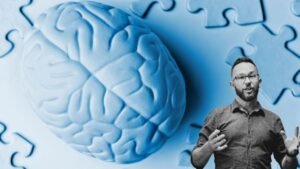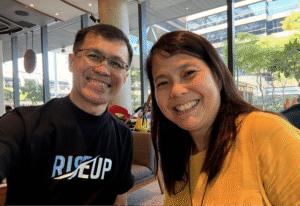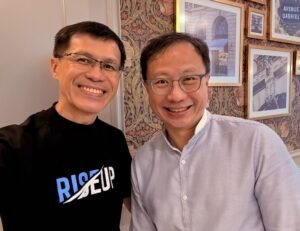Leadership training doesn’t work when it’s one-size-fits-all. Every team has different dynamics, challenges, and goals—which is why tailored leadership training is not just a trend, but a necessity. To equip leaders effectively, companies need to go beyond standard workshops and assessments and invest in training that speaks directly to the unique needs of their people.
In this guide, we’ll walk through how to assess your team’s current leadership capacity, identify gaps, and build a comprehensive leadership training programs and plan that empowers leaders at every level of the organization.Why One-Size-Fits-All Leadership Training Doesn’t Work
Generic training might check the box, but it rarely drives lasting impact. What works for an emerging team leader won’t always work for a VP overseeing senior leaders across multiple departments. Context matters. Leadership development should reflect each role’s challenges, not assume everyone needs the same growth path.

According to a Forbes article, “83% of companies recognize the need to develop leaders at all levels, yet only 5% have implementation plans in place.” This significant gap between recognition and execution underscores why many leadership programs fail to deliver the desired impact. Training initiatives often lack the necessary traction to be effective without personalisation and strategic alignment.Forbes
STEPS TO IDENTIFY THE GAP AS GUIDE TO YOUR TRAINING DESIGN
Step 1: Assess Current Leadership Capabilities
Start with a baseline. Use 360-degree feedback, employee surveys, research, and performance evaluations. These give you both qualitative and quantitative insights into leadership behavior. Focus on assessing critical competencies such as:
Communication clarity
Adaptability in the face of change
Confidence in decision-making
Emotional intelligence and self-awareness
Involve key stakeholders across your organization’s specific HR, department heads, and direct reports. Leadership capabilities aren’t always about job titles—they’re about influence, accountability, and how people show up during times of stress or uncertainty. Consider incorporating peer reviews or team interviews to uncover blind spots leaders may not recognize.
Step 2: Identify Leadership Gaps
Once you have a clear snapshot of your organization’s context and team’s capabilities, compare those insights against the leadership competencies your business needs to thrive. This is where misalignment often becomes clear.
Some examples of common and leadership skills gaps include:
Team leads who avoid giving difficult feedback
Managers who lack the skills to lead cross-functional initiatives
Executives who fail to communicate strategic direction or inspire others

In the case of Southwood School, administrators recognized that the existing performance management system for support staff was ineffective and lacked employee support. Issues included missed deadlines, confusion over procedures, and perceptions of the process as a “waste of time.” To address these challenges, the school designed a new performance management system and implemented a formal training program tailored to both appraisers and appraisees. This initiative aimed to ensure all employees understood the new system and could engage with it effectively, demonstrating the importance of customized training solutions based on internal assessments. SHRM
Step 3: Segment Your Leaders
Leadership training isn’t just about content—it’s about the audience. Segment your leaders’ online training according to their roles, challenges, experience levels, and the kind of impact they’re expected to make.
Emerging Leaders often need support in foundational areas such as communication, conflict navigation, and personal accountability.
Mid-Level Managers benefit from training that enhances delegation, cross-functional collaboration, and resilience.
Senior Executives require a focus on leading transformation, scaling vision, and developing future leaders.
Tailoring content to these segments ensures relevance and promotes more vigorous application. You’ll also want to consider generational preferences. For leadership development solutions, for example, Gen Z leaders may prefer digital microlearning and real-time feedback, while Boomers may benefit from structured mentoring sessions.

A 2024 Forbes survey found that “54% of CEOs anticipate increased challenges in their roles,” which reinforces the importance of business strategy in creating targeted programs that anticipate complexity at the top (Forbes).
Step 4: Design the Leadership Training Plan
Now it’s time to connect the dots between leadership needs and learning design. Use a mix of training formats to accommodate learning styles, schedules, and team structures:
Workshops provide real-time engagement and peer learning
.Microlearning (short-form, focused content) supports retention and on-demand flexibility.
Mentorship and coaching offer ongoing, personalized development.
Cross-functional projects allow leaders to apply their learning while solving real challenges.
At Coca-Cola Consolidated, tailored training was achieved through immersive internships and mentorship programs designed to build leadership pipelines from within. These programs spanned 14 states and aligned with the company’s leadership competency framework strategy, demonstrating how large-scale organizations can still personalize training efforts (Axios).

How Coca-Cola Did It
Coca-Cola Consolidated took a strategic, layered approach to leadership development by aligning all initiatives with its internal leadership competency model. These programs are designed to prepare leaders for future roles and foster personal growth and long-term retention.
Here’s how they structured it:
Accelerated Leadership Development Programs
Select high-potential talent across five leadership levels and immerse them in experiences tailored for future senior-level roles.Foundation of Leadership Program
Focused on 1,600+ “Critical Middle” leaders who manage front-line teams to build readiness for broader operational responsibility.Aspiring Leader Program
Open to all teammates, this program delivers an online leadership journey and includes access to specialized experiential learning centers.
Beyond formal training, Coca-Cola also supports broader development and learning:
The HOPE Scholarship Program helps eligible teammates and their families pursue higher education, from degrees to certifications.
The Applied Learning Internship welcomed 35 interns from 21 schools in 2023 at the Charlotte headquarters, providing hands-on exposure to real-world operations.
Through the HBCU S.O.A.R. Program, students from historically Black colleges received scholarships and joined a weeklong immersive business acumen program.
By embedding these programs into its culture, Coca-Cola Consolidated has seen greater talent mobility, improved leadership readiness, and stronger employee retention. More importantly, it has cemented its identity as a learning organization that equips teammates with the resources, experiences, and pathways to lead.
Step 5: Implement and Measure Success
Launching your program is just the beginning. To truly see impact, you must track progress and refine as you go. Build in metrics that connect your leadership development program to performance:
Number of internal promotions or succession readiness
Employee engagement scores tied to leadership behavior
Retention rates within teams undergoing training
Feedback from direct reports on manager effectiveness
You can also run pulse surveys before and after key training phases. This data allows you to adjust in real time, spot areas needing reinforcement, and highlight your program’s impact on participants.

And the investment women leaders make pays off. As Forbes reports, “employers see a $7 return for every $1 spent on leadership development” (Forbes, 2023).
Real-World Examples of Customized Leadership Training
- State Street Corporation launched its “Journey to Leadership Excellence” initiative to develop consistency in leadership behavior across global VP-level roles. The program used 30-day challenges, live webinars, and cultural alignment activities to foster authentic engagement (Harvard Business Publishing).
JJM addressed the lack of leadership diversity by building programs specifically for women and underrepresented talent. These efforts created meaningful internal networks and directly improved promotion outcomes (SHRM).
Southwood School, as mentioned earlier, focused on practical, in-house coaching to address confidence and process issues in performance management—another example of custom training built from internal observations.
Conclusion

Effective leadership development starts with listening: to data, to teams, and to your business’s evolving demands. A tailored, specific leadership development training plan is more than a good idea—it’s an essential part of growing a capable, confident, and resilient workforce.
By identifying real gaps in coaching skills, designing relevant learning experiences, and measuring what matters, you’ll go beyond development for development’s sake. You’ll create a culture of leadership that fuels performance, retention, and transformation.
The best time to build your plan was yesterday. The second-best time? Right now.

A trailblazer in humanising leadership and building high-resilience teams. As a former United Nations Peacekeeper, he leverages his high-stakes experience to redefine leadership dynamics. With a career distinguished by numerous accolades, Joseph now helps organizations thrive through a human-centric approach, enhancing performance, productivity, and workplace culture.







